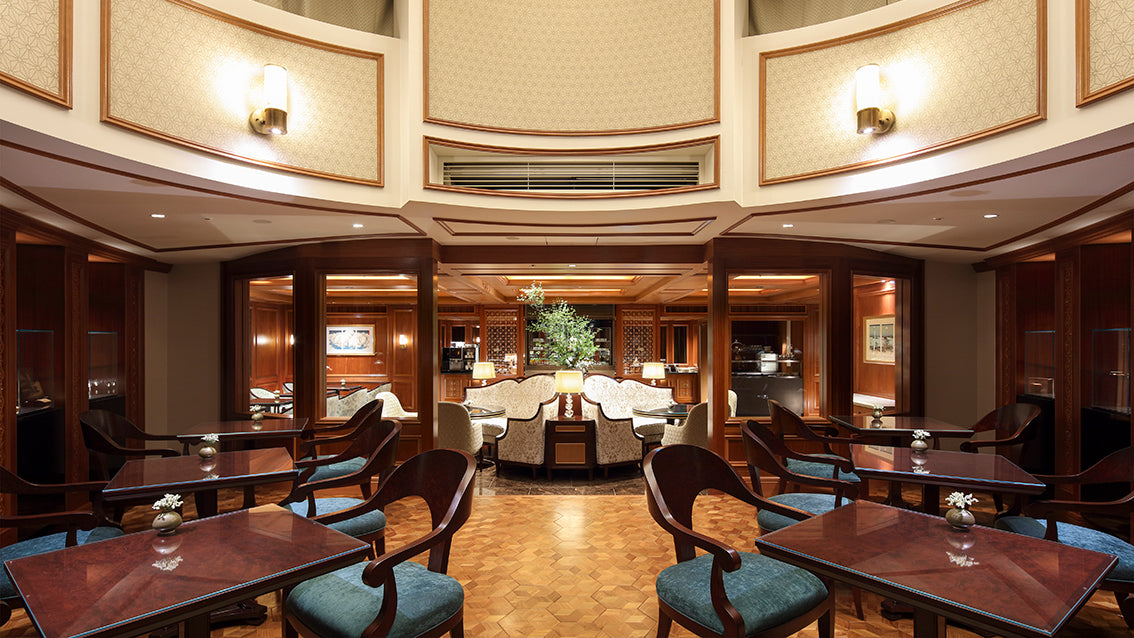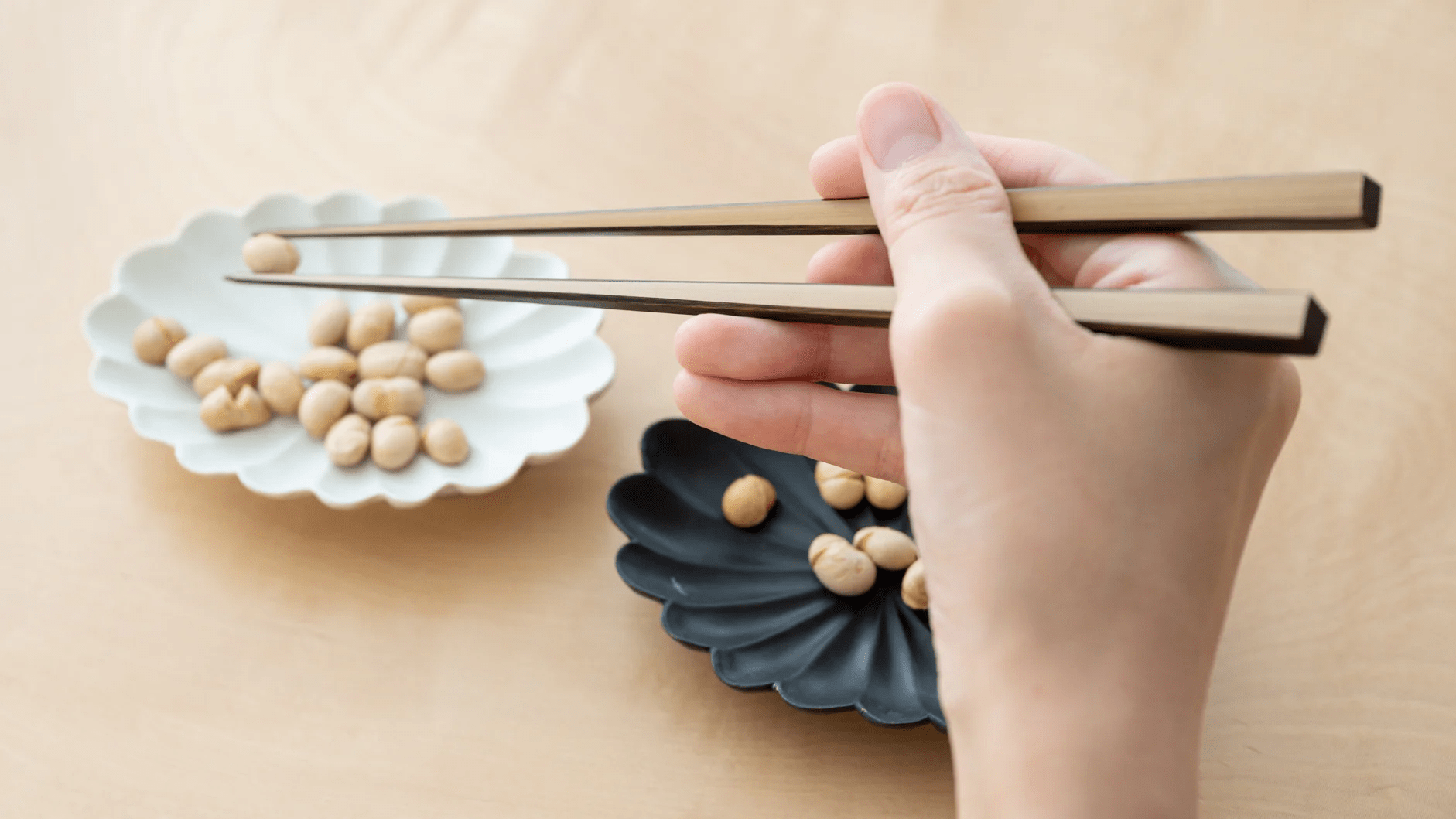
Luxury Tokyo Hotels: Where Art Meets Tradition
Written by Ito Ryo
Some hotels you can only find in Japan. Staying in such a place, where Japanese art and history take center stage, is an excellent opportunity to make the most of your trip.
But it can be hard to know where to look. So Team Musubi explores three unique Tokyo hotels that allow guests not only comfortable places to stay for the night, but also immersive experiences of Japan’s traditional culture and aesthetics. If you, like us, share an appreciation for Japanese history, crafts, and art, these might be just the hotels for you.
Come along with us as we dive into the luxurious worlds of a museum hotel, a garden hotel, and a library hotel. What adventures in Tokyo await?
table of contents
Hotel Gajoen Tokyo: A Treasure Trove of 2,500 Japanese Art and Craftworks

Way back in the Edo period (1603–1868 CE), Tokyo’s Meguro area centered on the Buddhist temple Meguro Fudoson. The neighborhood around it was a much-loved scenic area, well-known and well-loved as a spot for holidays and pleasure outings.
Meguro now houses the renowned Hotel Gajoen Tokyo. The hotel’s origins trace back to the restaurant Meguro Gajoen, a high-end establishment founded in 1931. The founder's vision for Meguro Gajoen was to offer not only exquisite cuisine but also an extraordinary and luxurious visual feast. Both walls and ceilings were adorned with paintings by the era’s leading artists, sculptures were distributed throughout, and overall the space was imbued with magnificent artistry.
Ninety years later, this legacy continues today, with guests at Hotel Gajoen Tokyo enjoying an experience akin to visiting a museum, surrounded as they are by over 2,500 pieces of art.
Showcasing the Best of Art and Culture Amid Historic Architecture
Most of the hotel has been modernized, including the renovation in 2017 of all guest rooms into suites evoking the style of traditional tea rooms. But one architectural gem from the hotel’s inception remains carefully preserved: Tokyo Metropolitan Government designated Tangible Cultural Property "Hyakudan Kaidan - The Hundred Stairs-".

Built in 1935, this wooden structure connects seven rooms of varying themes via a long, stately zelkova wood staircase. This unique construction was once the center of vibrant banquets.
The proprietor at the time commissioned different artists for the decoration of each room along the stair. That fostered competition, leading to a set of interiors unmatched in opulence.
Although the building itself is modern, the art within breaths the life of Japan’s aesthetic sensibilities during the very artistically rich Momoyama through Edo periods (combined, 1573–1868 CE).
Today, rather than banquets, "Hyakudan Kaidan" hosts art exhibitions. These are held five to six times a year, during which it is possible to visit the grand stair and its many rooms.

At the time of Team Musubi’s visit in November was an exhibition celebrating the theme of moon-viewing, a cherished Japanese autumnal custom. Called Tsuki no Hyakushi x Hyakudan Kaidan, with the English title One Hundred Aspects of the Moon x Hyakudan Kaidan, the event brings together both old and new artworks in one exhibition. This art event spotlights the many-faceted beauties of the moon while offering a chance to explore historical architecture—a rare treat. Below are a few of our favorites from the event.
Exploring Stories of the Moon through Famous Ukiyo-e
Central to the exhibition is the print series from which it got its name, Tsuki no Hyakushi, known in English as One Hundred Aspects of the Moon. This hundred-work series of ukiyo-e prints by Tsukioka Yoshitoshi (1839–1892) showcases diverse interpretations of the moon through depictions of ancient through contemporary Japanese and Chinese myths, legends, history, and poetry. Twenty works of that series, separated into early and late periods, are showcased at the exhibition.

The main exhibition space for these is the Jippo Room, named for prominent painter Araki Jippo (1872–1944), whose paintings of flowers and animals adorn the ceiling. The room’s interior is richly decorated with radiant mother-of-pearl inlays and cloisonné enamel decorations resembling delicate flower petals, creating a luxurious atmosphere.

Five ukiyo-e prints from One Hundred Aspects of the Moon are displayed in this room. Together with men and women from myths and historical legends, these five prints depict diverse views of the moon. Not only are there direct representations of full and crescent moons, but also indirect suggestions of the moon, using visual cues such as moonlight on freshly fallen snow, or the direction of the gazes of the woodblocks’ characters to suggest the moon hangs in the sky just out of frame.
One piece among these is Ishiyama Temple, a portrayal of Murasaki Shikibu (c. 978–c. 1014), a female writer from the Heian period (794–1185 CE). The artwork is inspired by the legend that while sitting at Ishiyama Temple on the shores of Lake Biwa, gazing at the reflection of the moon in the lake’s surface, Shikibu conceived the storyline for her famous novel, The Tale of Genji.

Go up "Hyakudan Kaidan"’s stairs and this story as well as other episodes of Heian period romantic intrigue appearing in The Tale of Genji continue in the next room, the Gyosho Room.
The Gyosho Room was designed by Sakari Hourei (1895–1953), who was responsible for much of the hotel's interior, and features vivid woodcarvings with lavish, pure gold leaf, pure gold dust and pure gold paint. Among the seven rooms of "Hyakudan Kaidan," this one stood out as particularly opulent.

Displayed here is a massive moon-shaped lantern crafted by a lighting artist using washi paper. Alongside it is a recreation of the aristocratic attire worn by Hikaru Genji, the protagonist of The Tale of Genji. This is created out of plant-dyed fabric by a Kyoto dyeing and weaving workshop that, originally established in the Edo period, is now in its sixth generation of artisanship today.

Additionally, glass art evoking the waters of Lake Biwa—reminiscent of what Murasaki Shikibu might have seen at Ishiyama Temple—is also exhibited, emanating a delicate brilliance. Visitors are immersed in a space that intertwines the luminous world of Tsukioka Yoshitoshi’s Ishiyama Temple with the literary universe of The Tale of Genji, providing a deeply evocative experience.

A Stunning Installation of a Moonlit Wilderness
Another highlight worth mentioning is the exhibition in the grand hall known as the Sokyu Room, named for renowned Japanese landscape painter Isobe Sokyu (1897–1967), who adorned the room with decorative murals.
Susuki grass, a quintessential autumn motif often depicted alongside the moon in traditional Japanese art, features prominently in several works from Tsukioka Yoshitoshi's One Hundred Aspects of the Moon. With this as inspiration, the room has been transformed into a breathtaking installation: approximately 2,000 stalks of susuki planted to fully cover the floor, and a massive circular screen, 2 m (6.6 ft) in diameter, displaying the moon using projection mapping. The immersive atmosphere is further enriched by the ambient sound of autumn insects chirping and intermittent gusts of wind, which sway the susuki, evoking the sensation of a windswept wilderness.

Adding to the immersive experience are Isobe Sokyu’s Japanese paintings of pine tree-dotted fields, which adorn the ranma, transoms located just below the ceiling, and encircle the room. This integration of traditional art and installation creates a unique ambiance, making visitors feel as though they are gazing at the moon from an expansive autumn grassland.
Another remarkable feature of many rooms including the Sokyu Room is the shojidoors’ exquisite kumiko woodworking, a traditional Japanese craft with over 1,400 years of history. Assembling intricate wooden lattices without nails requires advanced skill, and in some rooms, the artisans thoughtfully designed the lower portions of the doors with particularly fine patterns, ensuring they could be appreciated from the seated eye level of visitors. This attention to detail and hospitality leaves a profound impression.

Upcoming Exhibitions at Hyakudan Kaidan Celebrating Japanese Culture
Of course, this exhibition extends to the remaining rooms of "Hyakudan Kaidan," and each offers captivating displays.
Most importantly, in the heart of a modern urban landscape dominated by towering concrete structures, "Hyakudan Kaidan" provides a rare opportunity to reflect on the rich lives of people from a bygone era while exploring this historically and culturally significant architectural gem.
Future exhibitions at "Hyakudan Kaidan" promise to continue showcasing the essence of Japan. Plans include unique displays that emphasize the building’s inherent charm, as well as exhibits celebrating Japanese miniature arts, such as bonsai and hina dolls. For those interested in Japanese art and culture, paying a visit is a wonderful opportunity to experience these one-of-a-kind exhibitions yourself.

Hotel Gajoen Tokyo
1-8-1 Shimomeguro, Meguro-ku, Tokyo

Hotel Chinzanso Tokyo: A Stay Amid Tokyo’s Premier Japanese Garden

Our next recommendation is Hotel Chinzanso Tokyo, renowned for its expansive Japanese garden. It is a green space so lush that as soon as we pass the lobby and catch sight of the garden through the big glass window, I momentarily forget that we are still in the middle of Tokyo.

The name of the hotel, Chinzanso, means “estate of camellia mountain,” after the lands on which it stands, a natural spot of picturesque beauty that has long been fertile ground for wild camellias.

During the Edo period the land was a daimyo’s estate, but it was later bought in 1878 by the powerful politician Yamagata Aritomo, a twice-elected prime minister and one of the dominating senior statesmen of the Meiji era (1868–1912 CE). Taking advantage of the richly undulating land, Yamagata built a grand residence and a Japanese garden with an impressive waterside landscape of ponds, waterfalls, and babbling brooks, and named the estate Chinzanso.
In 1918, during the following Taisho era (1912–1926 CE), Baron Fujita Heitaro, the most prominent businessman in the Kansai region—a place of origin shared by Yamagata—took over ownership of the estate. While retaining the basic design of the garden, Fujita enhanced the garden's attractions with the placement of a three-story pagoda and other cultural treasures.

The majority of the estate was destroyed by fire during World War II, but after the war it was rebuilt by Ogawa Eiichi, a businessman in the tourism industry whose ambition was to create an oasis of greenery in Tokyo. The project, which began in 1948, involved the transplantation of more than 10,000 trees. After four years, Chinzanso had made a spectacular comeback.
Chinzanso’s operation as a hotel began some thirty years ago in 1992. A major attraction of this hotel is the beauty of nature that changes delicately with the seasons in the huge Japanese garden. The camellias and cherry blossoms that bloom in the spring, the fresh green of the trees that follow, hydrangeas during the rainy season, fireflies that fly among the trees on early summer nights, maple leaves in autumn, and other seasonal scenes provide a moment of relaxation and healing.
A few years ago, the garden also created a new feature, the Tokyo Sea of Clouds. This fusion of artistry and technology fills the garden with fresh mist, allowing visitors to enjoy a new view of this masterpiece of modern Japanese gardens.

A New Lounge Uniting Art, History, and Nature
In July 2024, Hotel Chinzanso Tokyo opened a new lounge called Le Ciel, French for “sky.” Exclusively for suite room guests, visitors can fully enjoy the magnificent, panoramic views of the 150-year-old historic garden from this lounge.

Le Ciel’s concept is “New Heritage.” It aims to reexamine the hotel’s historical background and carefully preserve its traditions and culture, while also incorporating new elements unique to the hotel. Overall, the space was designed as a special place to create a new legacy.

In the reception area before entering the lounge, guests are greeted by a golden folding screen painted by Kano Sanraku. With its vibrant trees, flowers, and animals transitioning from spring to summer, the screen is a nod to the hotel’s garden. Further welcoming suite room guests is a handcrafted Japanese carpet featuring designs of the garden’s seasonal flowers.
Stepping into the lounge, one finds a tranquil space. The room is unified by the hotel’s characteristic style, a refined European aesthetic that skillfully incorporates elements of Japanese design. The ceiling, for example, is papered in karakami—a traditional decorative paper applied to sliding doors and partitions in Japanese homes—while kumiko latticework is employed for room dividers.

Near the glass windows, which rise over 4 m (13.1 ft) high and offer particularly stunning views of the garden, kumiko is also used in the luminous ceiling—a kind of lighting that fully spans the ceiling. The addition of kumiko softens the light that filters through, gently illuminating the space. On both sides of the room are glass cases displaying ten or so traditional craftworks and artworks.
The exhibited items change every so often, but on the day Team Musubi visits, the displays include lacquerware depicting Mount Fuji in gold maki-e. These pieces have been passed down through the Fujita family, the creators of the garden. Also on display are Wajima lacquer boxes; Nambu iron kettles adorned with charming floral motifs; luxurious Kutani porcelain vases; Arita porcelain jars with beautifully smooth and pure white surfaces; and Edo Kiriko glass plates, a type of glass craft that has been produced in Tokyo since the Edo period. These pieces offer an opportunity to appreciate some of Japan’s most representative traditional crafts and artworks.




In fact, such displays can be found not only in Le Ciel but throughout the hotel. This reflects Hotel Chinzanso Tokyo’s commitment to respecting and continuing the legacy of Japan’s valuable traditional beauty and craftsmanship.
Finally, here’s a special tip to help you enjoy the hotel and its lounge even more. In the morning hours, Le Ciel serves cube-shaped croissants paired with the hotel’s original honey, only available in this lounge. This “Garden Honey,” as it is called, is harvested from bees that collect nectar from the flowers blooming in the garden below. Its color, flavor, and aroma change with the seasons, offering a sensory experience that reflects the transitions of nature throughout the year.

True to its concept as “Tokyo’s Oasis,” Hotel Chinzanso Tokyo is located in one of the most serene and upscale residential areas of the city. With its magnificent garden, lounge, and extensive on-site facilities, it is an ideal place to enjoy a relaxing and culturally immersive stay in Tokyo.
Hotel Chinzanso Tokyo
2-10-8 Sekiguchi, Bunkyo-ku, Tokyo

Shiba Park Hotel: A Casual Gateway to Japanese Culture

The last hotel we would like to introduce is Shiba Park Hotel, a beloved destination among international visitors, with approximately 90 percent of its guests coming from overseas. Its excellent location near Tokyo Station and Tokyo Tower is one of the key reasons for its popularity.
Shiba Park Hotel first opened its doors in 1948, shortly after World War II, as a hotel exclusively for foreign guests. At the time, it gained an exceptional reputation among international travelers by offering hospitality unique to this hotel, such as shoe polishing services and an unbeatable accommodation plan—just $10 for one night’s stay for two people, two meals included.

The hotel's rich history and traditions are still very much alive today. In 2020, seventy-two years after its founding, Shiba Park Hotel underwent a rebranding process to evolve into a hotel that guests could appreciate even more.
During the rebranding, the hotel took inspiration from the history of the land on which it stands. The area was once part of Zojoji, a Buddhist temple deeply revered by the Tokugawa Shogunate. Zojoji served as a center for education, housing students aspiring to become monks in dormitories called gakuryo, where they lived and studied Buddhism.
Many international visitors to Japan are deeply interested in the country’s history and culture. Thus, the newly revamped Shiba Park Hotel took inspiration from its origins as a place of study and ran with the concept of a “Library Hotel,” curating an extensive collection of books in both English and Japanese. These books cover a wide range of topics, including traditional Japanese culture, history, and customs, providing an engaging way for guests to learn while enjoying their stay.


The hotel’s impressive collection of 1,500 books is stored in large wooden bookshelves and distributed across three main areas: the Library Lounge on the first floor, the grand Central Staircase that connects the first and second floors, and the foyer on the second floor. Guests are free to pick up any book they like and read wherever they like.

The first-floor Library Lounge and the second-floor foyer are both furnished with upholstered sofas, creating a cozy atmosphere reminiscent of a study in a grand private residence.


Additionally, the reception counter on the first floor, which originally served as a bar, now offers a variety of beverages, including coffee, tea, wine, beer, and sake. Guests can enjoy reading here, too, a beverage in one hand, a book in the other.
An Exhibition Introducing Stories Woven by Japanese Craft Artists
In 2022, the hotel began hosting a unique exhibition in its newly-created library area. Titled the Tale of Artisans, this exhibition shares the stories of tradition woven by Japanese craft artisans from past to present. It showcases traditional crafts selected from across the country, displayed alongside related books, with themes changing seasonally.

On the day Team Musubi visits, the exhibition is “Totonou,” harmony. The theme resonates beautifully with the season, perfectly suited to the crisp, clear air of a Japanese autumn, with its comfortable temperatures that naturally relax the body and mind.
The items on display include Shiro Satsuma ware, a type of ceramic from Kagoshima Prefecture known for its soft ivory-colored surface and gentle texture. The Shiro Satsuma wareitems feature gold embellishments and range from jewelry like rings, earrings, and pendants to products such as lamps adorned with motifs of cherry blossoms and butterflies.

Also displayed are a kind of handcrafted brush that has been made in Tokyo for 150 years. These are known as teue-hake, literally meaning “hand-planted,” for the method by which the bristles are set in the handle. Among these, the small, palm-sized brushes particularly stand out. Some feature handles made with Edo kumiko, a traditional kumiko woodworking technique from Tokyo, while the handles of others are made in the shape of chidori, plovers. This bird is associated with good fortune for the way it flies easily over the waves. The brushes, with their charming and timeless designs, are not only functional but also make for delightful interior decor.

Enjoying a Rich Hotel Experience at Shiba Park Hotel
Shiba Park Hotel’s library facilities and exhibitions have been highly praised by international guests. In addition to these, the hotel also offers activities such as an easy-to-try workshop on kintsugi, the traditional Japanese art of repairing pottery with gold. Also on offer is a free service that lets guests enjoy a matcha tea ceremony while seated at a table, adapting to modern lifestyles. The tabletop format is an accessible style that suits modern and Western furniture, allowing guests to try it out at home after their visit.


Many visitors to Japan lead busy schedules during their stay, often leaving little time for rest. It’s not uncommon for a hotel to simply serve as a base for sleeping and preparing for the next day.
However, at Shiba Park Hotel, guests can take a break from their hectic travels, relax in the comfort of a Western-style library, and experience Japanese culture in a casual and enjoyable way. Such moments are what make a stay here truly special.
Shiba Park Hotel
1-5-10 Shibakoen, Minato-ku, Tokyo

Experiences that can only be enjoyed at your destination elevate the value of a trip, leaving you with priceless memories to cherish forever. With Japanese hotels launching new initiatives like these to provide such unique experiences to international visitors, this is an exciting time to visit.
While choosing sightseeing destinations is essential, paying careful attention to your choice of accommodation can make your stay in Japan even more remarkable and memorable. With hotels like this, you don’t have to stop seeing Japan even when you’re tired after a long day on your feet. Come to rest for the night and enjoy even more unforgettable moments.







Leave a comment
This site is protected by hCaptcha and the hCaptcha Privacy Policy and Terms of Service apply.